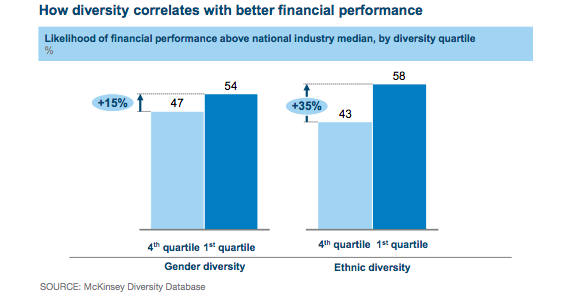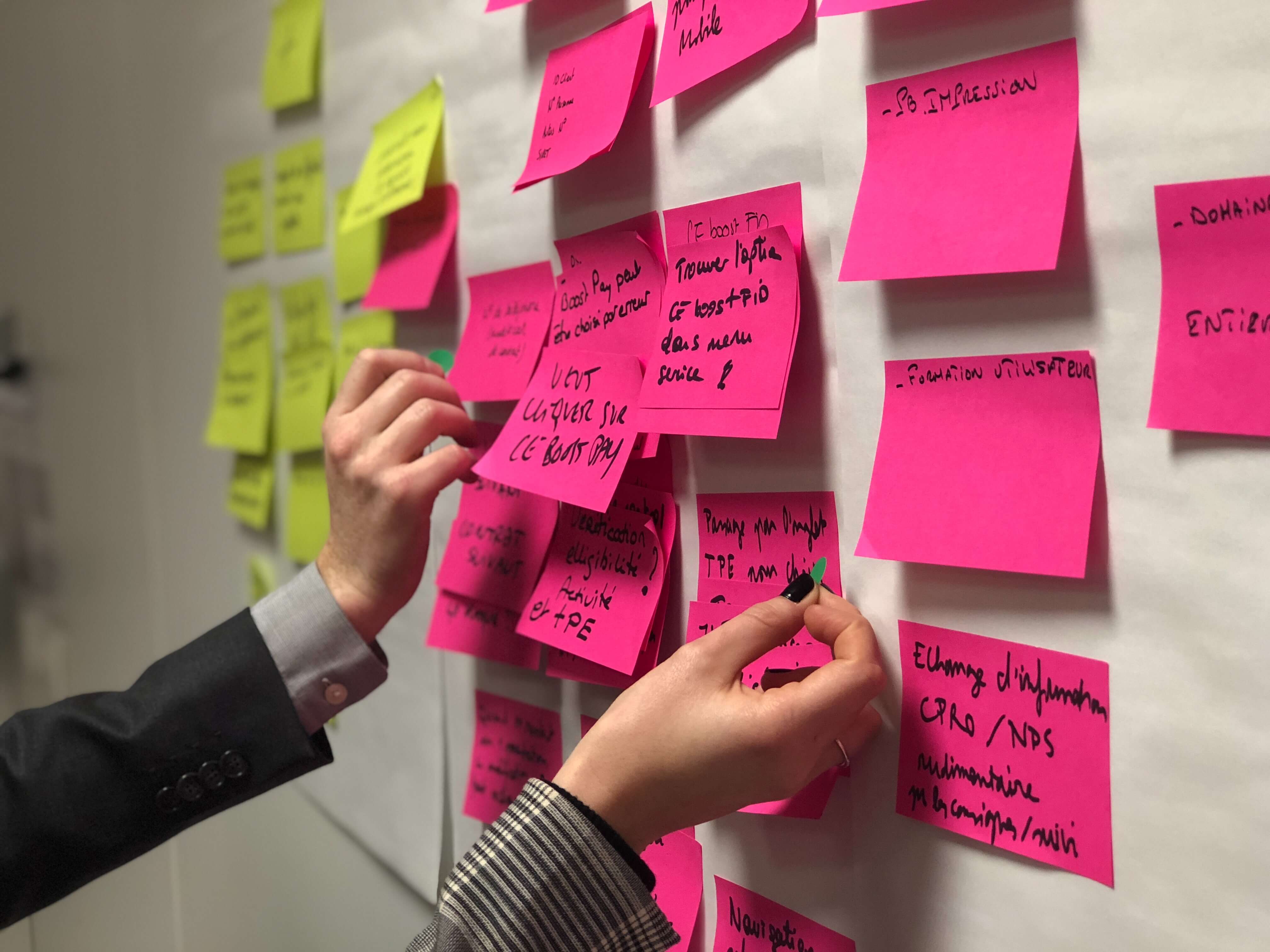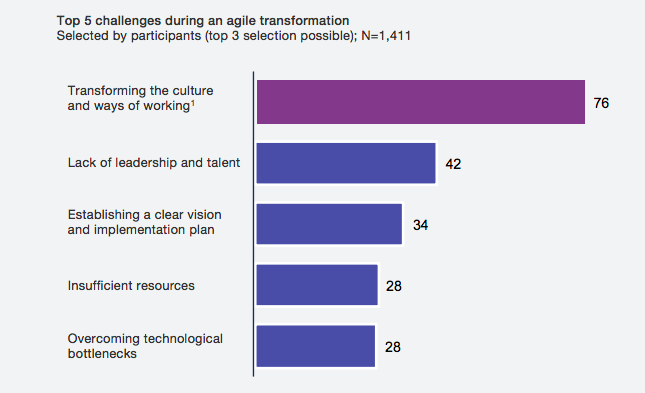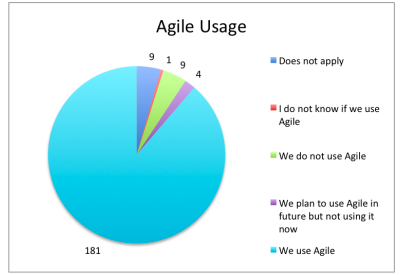As diversity and inclusion goes hand-in-hand, they have become popular buzzwords among the modern companies that are trying to embrace the ever-changing and growing team culture. According to Simma Lieberman, an inclusion expert and author of 110 Ways to Champion Diversity and Build Inclusion, “In an inclusive culture, everyone has the opportunity to do their best work no matter who they are, what they do or where they work”.
Many organizational leaders truly want to create an inclusive culture where everyone feels like a part of the big picture and know how they contribute to the ultimate success of the company. But not all understand what it entails or how to focus on the effectiveness of the concept. The key to inclusion is to make the team comfortable and make them believe that they are a good fit with the organization.

According to the latest reports by McKinsey, companies in the top quartile with racial and ethnic diversity are 35% more likely to have financial returns above their respective national industry medians as more-diverse teams make decisions that can enhance than less-diverse teams.
Diversity and Inclusion
Diversity, as a factor, brings out a variety of viewpoints, experiences, and interests on the table that creates more unique ideas and proves to be prosperous for the organization. The healthy challenge that emerges from the diversity pool gives rise to stronger solutions as problems can be viewed from multiple angles while interacting with different backgrounds. When each individual is made comfortable in expressing their unique talents and experiences, it gives them a sense that their word is acknowledged and is not lost in the noise.
If employees aren’t involved in the process, they might not bring out the best of their capabilities due to lack of motivation or belongingness. However, inclusion is not a tangible process that can be documented or put in place by order. It can become invisible and difficult to grasp when working with large teams spread across departments. Therefore, teams should value individuals and interactions over processes when it comes including diversity and approaching the issues at hand.
Experts believe that it is the responsibility of a manager to ensure that each team member knows that their ambitions and growth are taken into account. It is crucial to have collaborations and cross-functional teams in the company to keep it interactive and growing towards the ultimate goal. An active structure in the team encourages and reflects on the members and their outputs. And to keep the structure alive, daily standup meetings can boost the interactions where each one “talks about what they could have done better to work more effectively as a team.”
However, diversity alone cannot yield such results. It is important to pay heed to the human side of change. An organization’s formal efforts for inclusion can lack the human touch and create a disconnect with the informal culture. For instance, an employee can officially apply for company’s leadership development program, but if other team members are not cooperative and dismiss his/her ideas, it can be discouraging and later become a hindrance in his/her growth.
The report by the Center for Talent Innovation (CTI) on diversity and better decision making stressed the importance of inclusive leadership and identified two forms of diversity as follows:
- Innate Diversity: When the composition of a company’s customer base is represented in terms of gender, ethnicity, culture, sexual orientation, and age to understand its changing needs and develop data-based innovations.
- Acquired Diversity: A culture where employees are free to voice unorthodox views and suggest creative solutions. The diversity at leadership level breaks down insular biases through personal experience, making the organization more likely to act inclusively, and foster a communicative culture.
Adopt Inclusive Leadership Behaviours
Making inclusiveness as a norm is not enough when it comes to a diverse team where it can get lost in transition. Therefore, adopting behaviors and bringing in daily practices among the employees come into play when making your workplace more inclusive. Following are the key inclusive leadership behaviors that can be adopted:
- Encouraging team members to come up with new ideas to solve problems and develop new skills can enable empowerment in the team.
- Giving autonomy to the team and making them accountable for their responsibilities can instill a sense of control over their actions and confidence in their output.
- Motivating and encouraging the employees to stand up for what they believe in, even if it entails taking a risk can become a healthy behavior.
- When employees are encouraged to take criticism in a positive manner and admit mistakes to learn different viewpoints, they can overcome limitations by seeking contributions.
Location-Independent Agile
Insisting on having an inter-related agile team that is in the same location can become a barrier in quick deployments and processing of the team.
In today’s global business environment, having co-located teams is more unrealistic than being a constraint on the growth of the team. Insisting on having an inter-related agile team that is in the same location can become a barrier in quick deployments and processing of the team. When almost everything is technology dependent and online, location-independent teams working on several projects under a common umbrella has been observed as a culture that is adopted by many. With multiple members working on a project, there can be clashes in terms of approach. Here, agile teams can overcome such issues by not adopting a single way of working and making it fit for all projects or all team members. Let’s take an example- If a project needs a team with distributed capabilities and co-located teams that can improve easier access to local resources in terms of business knowledge, adopting agile teams can make the development process faster and increase the contribution from all corners.
However, some projects might need the team to be closely collaborated with all members and work in sync on each step along the way to achieve better results. Therefore, there are three ways to successfully implementing location-independent agile teams:
Know your Business Expertise
It is important to decipher the level of business expertise and skills required for the team to be at a specific location. If the work has non-negotiable constraints or needs constant access to the project, having agile teams can pose a problem for urgent or volatile work. However, with accumulated team experience, members can build business knowledge that can make them valuable and work in a distributed organization. If teams are new to the concept of agile, they should be co-located to build a common understanding, specifically among the leaders who can vouch for the success of location-independent teams in the future.
Choose the Right Model
The team should know which agile working model to choose as per organization’s needs and how to improve the agile capabilities as they grow to gain benefits of the location-independent style of working. There can be three types of model:
- Local: When the teams are new in the business, keeping them in a specific geography and close proximity with the product owner for continuous access is a wise decision till the program is ready to scale up and be evolved to the next level.
- Minimally Distributed: This model allows the product owner or few members to be located together and the rest of the team to be interrelated but independently agile. However, the members should understand the business processes and the infrastructure of the teams when it comes to decision making and privileges.
- Fully Distributed: In this model, the team members are grouped in agile teams across distributed locations where each team includes a specialist with sufficient business knowledge to drive day-to-day decisions within a framework defined by the product owner.
Correct Measures of Transition
When organizations are moving from minimally distributed to fully location-independent model to build an inclusive tech ecosystem, they can improve the team capabilities by keeping these methods in check:
-
Time-Zone Differences: For an agile team, minimum overlap across time zones can be enough to work out effective collaborations and communications. When working globally, the distributed teams manage the tasks in shifts by calibrating each team’s work hours. As one team finishes the shift, another team across the continent can pick up the work with enough time to communicate about the last update. This keeps the work steady and on-going with minimum confusion and at a sustainable pace.
- One Team Culture: Adopting the same agile practices, work and infrastructure privileges across teams lead to shared and common work characteristics that bind the organization together and guides the team better. Teams can also have culture coaches that can help the distributed teams to understand and appreciate the cultural differences to ensure that the teams have healthy working relationships.
- Distribution of Work: To maximize the workflow, teams should organize themselves in a manner that minimizes dependency and blockage. Having horizontal decentralization of roles and teams that can work independently keeping the organization’s infrastructure in check.

Improving the transition to Agile Teams
Changing a corporate culture or ideology takes more than introducing methodologies and moderating job descriptions. In order to persuade managers to embrace agile, a deeper emotional level of experience and leadership training is required that can enable them to adopt different sets of values and understandings about how the team can work towards a location-independent model.
However, the struggle doesn’t end there. Along with the manager, the team should also embrace the idea of making the culture customer-oriented. This change in the system requires constant and steady adaptation to the agile techniques and elimination of old methods. These are few ways to make the shift swift and seamless:
- The goal of the team should be the maximum satisfaction and delight of the customer, not making money for the organization.
- The role of the organization should shift from checking if the work assigned to the employees is done within the timeline, to making sure that there is no impediment getting in the way of the tasks assigned to them.
- Work should be coordinated by agile techniques and methods that includes iterative work cycle and direct feedback instead of following stringent rules, plans and reports.
- The organizational structure should be horizontal in nature than having multiple hierarchies that can delay or block the workflow for the team members.
- The team should focus on transparency and steady improvement within the team rather than holding preoccupation with efficiency.

Agile Teams in Software Development
Agile techniques in a team or an organization was commonly seen among software companies where developers achieved different goals while working on the same project. They worked consistently to combine innovation and execution in a disciplined manner among the high-performance teams which were excited, energized and full of hope.
In 2008, according to Forbes, most of the instances of this different way of working were occurring in software development only. Even in 2010, most of the examples of agile management were only seen in few teams in software development as the implementations were itself not on a large scale. The news of Agile started spreading by 2016 as Harvard Business Review published articles on Agile and managers were getting aware of it.
However, it was only in 2017 that other sectors took actual notice and adopted them too. The first five fastest-growing firms that implemented Agile management practices were, Apple, Amazon, Facebook, Google, and Microsoft.
Organizations that encash the full talents of the employees were generating continuous value for customers and making a virtuous circle of value creation. The subsequent demonstration of growth on the success graph rewarded these firms with higher stock market values too.
Case Studies
Implementing Agile Development at Scale
Given the popularity of agile software development methodologies, a significant number of studies analyzed the impact of implementing them. One such study was conducted at Pearson Education, focusing on the penetration of agile development in the organization, and its perception in diverse roles. The study shows that about 90% of the respondents who use agile development, 13% of them work at the program level and 87% work at the team level. The analysis also indicates that among the population using the non-agile methods, 83% would like to switch to agile methods, while 11% of the agile users would like to switch to non-agile methods.

Result: With an overall positive perception of agile across the respondent population, the implementation at the team and program level is extremely effective. Majority of the respondents using non-agile development methods are willing to switch to agile development methods as it works well at the individual and team level.
Why Scrum Works: A Case Study from an Agile Distributed Project in Denmark and India
With a preconceived observation that scrum work well as an agile project management approach, this longitudinal case study tries to find out why in Denmark and India with a distributed project.
Based on the observation of Scrum gaining momentum and being used for distributed projects, the study concluded that Scrum provides communication, social integration, control, and coordination mechanisms that are especially useful for distributed and agile project management. With its simple mechanisms built-in for ensuring quality, it makes a number of boundary objects and boundary spanner roles available. Also, it builds up relations and networks within and for the project team by including simple but effective mechanisms for tracking project progress.
Conclusion
In order to take advantage of distributed agile teams to maximize productivity and innovation, companies need to know the art of doing it correctly. From the basics of knowing your business expertise to decide the level of agile maturity, the enterprise should define and determine the right location model based on factors like goals, capabilities and competitive landscape.
Subscribe
Related Blogs
Trek n Tech Annual Retreat 2025: A 7-Day Workcation of OSL

OSL family came together for the Trek n Tech Annual Retreat 2025, a 7-day workcation set amidst the serene beauty of…
Exploring Drupal's Single Directory Components: A Game-Changer for Developers

Web development thrives on efficiency and organisation, and Drupal, our favourite CMS, is here to amp that up with its…
7 Quick Steps to Create API Documentation Using Postman

If you work with API , you are likely already familiar with Postman, the beloved REST Client trusted by countless…




